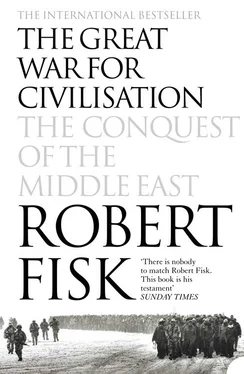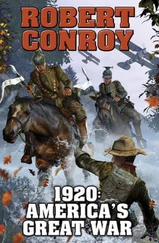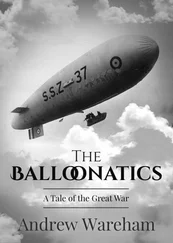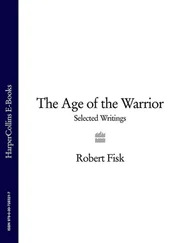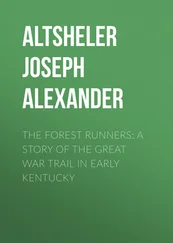In wars, I only travel with those I trust. Reporters who panic don’t get second chances. Conor O’Clery of the Irish Times had talked his way up from the Khyber Pass through Jalalabad. He was already in the old telecommunications office down town, watching with an evil glint in his eye as the operator soldered the letter ‘w’ back onto its iron stem inside the telex machine. Gavin Hewitt, a 29-year-old BBC television reporter, arrived with Steve Morris and Mike Viney, the smartest crew I’ve ever worked with, and a battered camera – these were the days of real film with its wonderful colour definition, now lost to the technology of videotape – and Geoff Hale. They were also the days of real crews when a soundman – in this case Morris – and a film editor, Hale, accompanied a reporter into the field. Hewitt had shrewdly found a beat-up old yellow Peugeot taxi, its front and back windows draped in plastic flowers and other artificial foliage behind which we thought we could hide when driving past Soviet or Afghan military checkpoints. For $100 a day, its driver, a certain Mr Samadali, was ready to break all the rules and drive us out of Kabul.
So on the bright, white morning of 9 January 1980 we set out in our ramshackle Peugeot to watch the invasion of Afghanistan. We headed east towards the Kabul Gorge, deep into the crevasse at the foot of the Spinghar mountains. The Soviet army was making its way down to Jalalabad and we threaded our way between their great T-72s and their armoured vehicles, each machine blasting hot, black smoke onto the snow from its exhausts. And beside the highway, the Afghan men watched, their faces tight against the cold, their eyes taking in every detail of every vehicle. They looked on without emotion as the wind tugged at their orange and green shawls and gowns. The snow spread across the road and drifted at their feet. It was two degrees below zero but they had come out to watch the Soviet army convoy hum past on the great road east to the Khyber Pass.
The Russian crews, their fur hats pulled down low over their foreheads, glanced down at the Afghans and smiled occasionally as their carriers splashed through the slush and ice on the mud-packed road. A kilometre further on, Soviet military police in canvas-topped jeeps waved them into a larger convoy in which more tanks and tracked armour on transporter lorries raced along the Jalalabad highway. They were in a hurry. The generals in Kabul wanted these men at the border with Pakistan – along the Durand Line – as fast as they could travel. Secure the country. Tell Moscow that the Soviet army was now in control. We drove alongside them for 16 kilometres, our car jammed between tanks and transporters and jeeps, the young Russian soldiers watching us from beneath their furs and steel helmets as the snow blew across us. Every kilometre, troops of the Afghan army stood on guard beside the dual carriageway and 8 kilometres out of Kabul the convoy passed through a Russian checkpoint, two Soviet soldiers standing to attention on each side of the road in long splayed coats of dark green.
The further we went, the safer we felt. We knew we were heading into danger; we were well aware that the Russians had already been attacked around Jalalabad. But once we had cleared the first suspicious police checkpoint in the suburbs of Kabul – we were, Hewitt fraudulently claimed with schoolboy innocence, merely touring the city – the next military post waved us nonchalantly through amid the convoys. If we had been allowed to leave Kabul, then we must have been given permission to be on this highway. That, at least, was what the Soviet and Afghan soldiers beside the road obviously thought. Who, after all, would countermand such permission? Thank God, we said, for police states. Our greatest concern was the speed we were forced to travel. The Russians moved fast, even their tank transporters overtaking each other at 80 kilometres per hour in the semi-blizzard, sometimes forcing civilian traffic to use the other carriageway, at one point almost crushing our diminutive taxi between a lorry and a tank.
All morning there had been rumours of a new battle at Jalalabad between the Russians and Afghan tribesmen. They were pushing armour out towards the city of Herat, close to the Iranian border, and back up towards Salang where a convoy had just been attacked. What the Soviets were representing as a move against ‘counter-revolutionary elements’ in Afghanistan was clearly taking longer to complete than expected. The American contention that 85,000 Soviet troops had now entered the country from Tashkent and Moscow appeared to be correct. There could have been a hundred thousand.
Packed into Mr Samadali’s cramped Peugeot, we were recording history. Steve and Geoff sat in the back with Mike sandwiched between them, hugging the camera between his knees as Gavin and I watched the Soviet troops on their trucks. The moment we knew that no one was looking at us, I’d shout ‘Go!’ and Gavin – he was, after all, the boss of our little operation – cried ‘Picture!’ At this point, he and I would reach out and tear apart the curtain of plastic flowers and greenery, Mike would bring up the camera – the lens literally brushing the sides of our necks in the front – and start shooting through the windscreen. Every frame counted. This was the biggest Soviet military operation since the Second World War and Mike’s film would not only be shown across the world but stored in the archives for ever. The grey snow, the green of the Soviet armour, the dark silhouettes of the Afghans lining the highway, these were the colours and images that would portray the start of this invasion. A glance from a Russian soldier, too long a stare from a military policeman, and Gavin and I would cry ‘Down!’, Mike would bury his camera between his legs and we would let the artificial foliage flop back across the inside of the windscreen. ‘Don’t let’s be greedy,’ Gavin kept telling his crew. We all agreed. If we kept our cool, if we didn’t become overconfident – if we were prepared to lose a beautiful shot in order to film again another day – then we’d get the story.
Above the village of Sarobi, we stopped the car. Afghanistan’s landscape is breathtaking in the most literal sense of the word. Up here, the sun had burned the snow off the astonishingly light green mountain grass and we could see for up to 50 kilometres east to the Khyber Pass, to the suburbs of Jalalabad, bathed in mists. For the descent to the Valley of the Indus was like walking from a snowstorm into a sauna. Hold your hand out of the window and you could actually feel the air grow warmer. Gavin was literally bouncing on his toes as he stood by the road, looking across the panorama of ridges and mountain chains. Far to the north we could even make out the purple-white snows on the top of the Pamirs. We were that close to China. And we felt, we young men, on the top of the world.
The tragedy of this epic had not yet gripped us. How could I have known that seventeen years later I would be standing on this very same stretch of road as Osama bin Laden’s gunmen prayed beneath that fiery comet? How could I know, as I stood with Gavin on that hillside, that bin Laden himself, only twenty-two years old, was at that moment only a few miles from us, in the very same mountain chain, urging his young Arab fighters to join their Muslim brothers at war with the Russians?
We were halfway down the narrow, precipitous road through the Kabul Gorge when a car came towards us, flashing its headlights and skidding to a halt. The driver, unshaven and turbaned, knew only that there was ‘trouble’ further on down the pass. He raised his hands in a gesture of ignorance and fear and then, having vouchsafed this vague intelligence, he drove off behind us at speed. In the mountains of Afghanistan, you do not take such warnings lightly. We all knew what happened to General Elphinstone’s British army in this very gorge in 1842. So when we drove gingerly on down the road, we watched the rocks above us where the snowline ended and the crags gave cover for an ambush. We carried on like this for 15 kilometres without meeting another car until we reached the little village of Sarobi, where a group of decrepit old buses and a taxi stood parked beside a barber’s shop. There was an Afghan policeman standing in the road who referred in equally indistinct terms to an ‘ambush’ ahead. The road had been blocked, he said. So beside the highway, with the mountains towering above us and the Kabul river carrying the melted snows in a thrashing torrent down the ravine below, we drank hot sweet tea until two Russian tanks came round the corner followed by two lorryloads of Afghan soldiers.
Читать дальше
